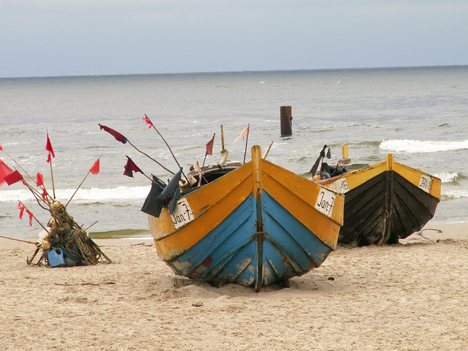
- Order:
- Duration: 1:57
- Published: 09 Feb 2010
- Uploaded: 26 Aug 2010
- Author: TheMarinewaves





































![Radio system, Hōkūleʻa[1] is a performance-accurate full-scale replica of a waʻa kaulua, a Polynesian double-hulled voyaging canoe. Radio system, Hōkūleʻa[1] is a performance-accurate full-scale replica of a waʻa kaulua, a Polynesian double-hulled voyaging canoe.](http://web.archive.org./web/20110825015659im_/http://cdn0.wn.com/pd/eb/56/144fac3b77b7096e4567bbed4931_grande.jpg)

![The Harbour Defence Motor Launch (HDML) was a British small motor vessel of the Second World War. The HDML was designed by W J Holt at the Admiralty in early 1939. During World War II 486 HDMLs were built, mainly by yacht builders, in the United Kingdom and a number of other allied countries. In view of their later expanded combat roles in some Commonwealth navies some HDMLs were re-designated as Seaward Defence Motor Launches (SDML) or Seaward Defence Boats (SDB).[1] The Harbour Defence Motor Launch (HDML) was a British small motor vessel of the Second World War. The HDML was designed by W J Holt at the Admiralty in early 1939. During World War II 486 HDMLs were built, mainly by yacht builders, in the United Kingdom and a number of other allied countries. In view of their later expanded combat roles in some Commonwealth navies some HDMLs were re-designated as Seaward Defence Motor Launches (SDML) or Seaward Defence Boats (SDB).[1]](http://web.archive.org./web/20110825015659im_/http://cdn0.wn.com/pd/5a/45/26495621075fd1662ca24b8f78b8_grande.jpg)


























A double hull is a ship hull design and construction method where the bottom and sides of the ship have two complete layers of watertight hull surface: one outer layer forming the normal hull of the ship, and a second inner hull which is some distance inboard, typically by a few feet, which forms a redundant barrier to seawater in case the outer hull is damaged and leaks.
The space between the two hulls is often used for storage of fuel or ballast water.
Double hulls are a more extensive safety measure than double bottoms, which have two hull layers only in the bottom of the ship but not the sides.
In low-energy casualties, double hulls can prevent flooding beyond the penetrated compartment. In high-energy casualties, however, the distance to the inner hull is not sufficient and the inner compartment is penetrated as well.
Double hulls or double bottoms have been required in all passenger ships for decades as part of the Safety Of Life At Sea or SOLAS Convention.
One of the disadvantages of a double hull is that the stability of a ship can be less than that of a single hull. Because the double hull raises the centre of gravity, the metacentric height is reduced.
A double hull does not protect against major, high-energy collisions or groundings which cause the majority of oil pollution, despite this being the reason that the double hull was mandated by United States legislation.
After the Exxon Valdez oil spill disaster, when that ship grounded on Bligh Reef outside the port of Valdez, Alaska, the US Government required all new oil tankers built for use between US ports to be equipped with a full double hull. However, the damage to the Exxon Valdez penetrated sections of the hull (the slops oil tanks) that were protected by a partial double hull. The double hull required by the new regulations would not have prevented extensive loss of oil from the Exxon Valdez, though it might have somewhat limited the losses.
Furthermore, a double-hulled tanker does not need longitudinal bulkheads for longitudinal strength, as the inner hull already provides this. Eliminating longitudinal bulkheads would result in much wider tanks, significantly increasing the free surface effect. However, this problem is easily corrected with the addition of anti-slosh baffles and partial bulkheads.
This text is licensed under the Creative Commons CC-BY-SA License. This text was originally published on Wikipedia and was developed by the Wikipedia community.
